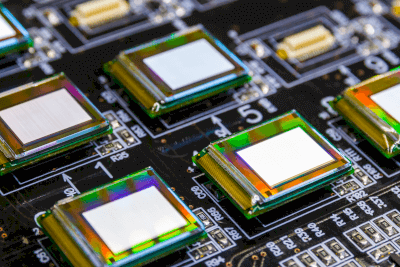What Is a Microdisplay?

A microdisplay is a compact display unit with a diagonal measurement of less than 0.25 inches, widely used in small electronic devices. It plays a pivotal role in virtual reality (VR) and augmented reality (AR) technologies due to its small footprint and ability to deliver high-resolution images.
Uses of Microdisplays
Microdisplays are versatile, finding applications across various fields:
1. Head-up Displays
Utilized in automobiles and aircraft to project driving-related information directly into the driver’s line of sight, enhancing safety and convenience.
2. Smart Glasses
Integrated into smart glasses to overlay digital information onto the real world, enabling hands-free data access.
3. Cameras
Employed in digital cameras as viewfinders, providing a digital preview of the frame, focus, and exposure settings.
4. Medical Equipment
Crucial in endoscopic cameras, offering physicians internal views for diagnosis and treatment with high image clarity.
Principles of Microdisplays
Microdisplays are manufactured using various technologies, including:
1. High-Temperature Polysilicon Liquid Crystals
Features fast response times and high-definition display capabilities, using polysilicon for pixel formation.
2. DLP (Digital Light Processing)
Employs digital micromirrors for image projection, commonly used in professional settings like movie theaters due to its high production cost.
3. LCOS (Liquid Crystal on Silicon)
A reflective technology that places a liquid crystal layer on a silicon backplane, known for high resolution and excellent contrast, suitable for 4K displays and medical projectors.
How to Select a Microdisplay
Considerations for choosing a microdisplay include:
1. Intended Use
Define the application, whether for VR, heads-up displays, or smart glasses, each requiring different specifications.
2. Resolution
High-resolution microdisplays offer detailed and sharp images, crucial for applications needing clear visual information.
3. Size and Weight
Important for wearable technologies, where comfort and portability are key. Durability is also a major factor, especially for medical and aerospace applications.
Other Information on Microdisplays
1. OLED Microdisplays
OLED technology, which uses organic materials for light emission, is predominant in microdisplays, offering self-illumination and high efficiency. OLEDs feature various layers that facilitate electron and hole combinations for light emission, with RGB and color filter methods for color representation.
2. VR Industry Applications
Microdisplays are critical for VR technology, providing immersive experiences with their compact size yet high-definition output. The VR industry benefits from microdisplays in creating realistic virtual environments in head-mounted displays.